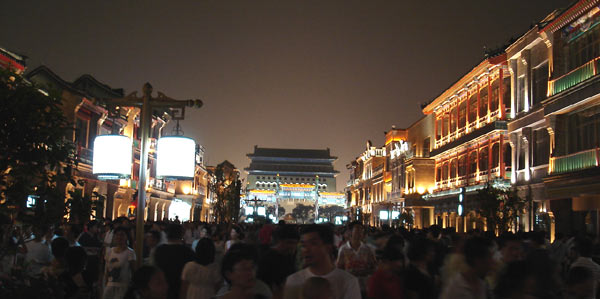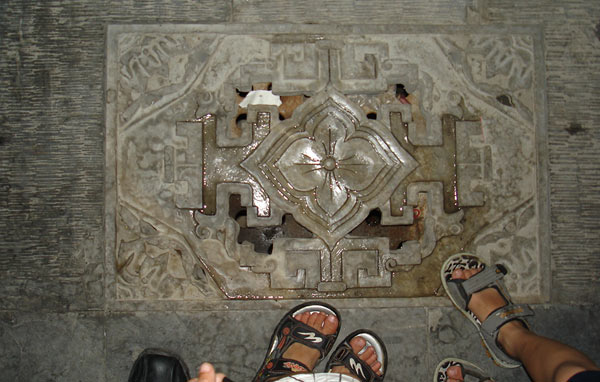Qianmen Street reached its peak in the 1920s and 30s. The renovation effort was mainly directed to restoring its character of this period, a time from which many historical photos survive.
At its northern end, dozens of old buildings were recreated, along with many old name-brand shops of cultural and historic significance. First to catch the visitor's eye is the Dabei Photo Studio (大北照相館) on the left, then comes Yue Sheng Zhai (月勝齋), a Muslim food store on the right. Further south visitors can see the Quanjude, the Roast Duck restaurant serving the famous Peking Duck, a must for any tourist.
|

|
|
Business is booming at all of the restaurants along the Qianmen Street. Photo by Wang Zhiyong. [China.org.cn]
|
Business is booming at all of the restaurants along the street – all, including Quanjude, have long queues of customers waiting to eat.
It was reported that 42 traditional shops, demolished during the socialist transformation campaign that began in 1956, have been restored. Understandably, the brothels are not included.
|

|
|
Some of the paving stones in Qianmen Street have even been carved with beautiful Chinese patterns. [China.org.cn]
|
The green and white paving stones and bird-cage-like street lamps testify to the designers' efforts to evoke Chinese traditional culture in the minds of the visitors. Some of the paving stones have even been carved with beautiful Chinese patterns.
It's said that Qianmen Street was the path ancient Chinese Emperors took to visit the Temple of Heaven for annual ceremonies of prayers to Heaven for a good harvest, so the street is also known as the "Street of Heaven." As such, during the renovation, a special stone path for Chinese emperors, like today's red carpet for Heads of State, was recreated in the middle of the street.